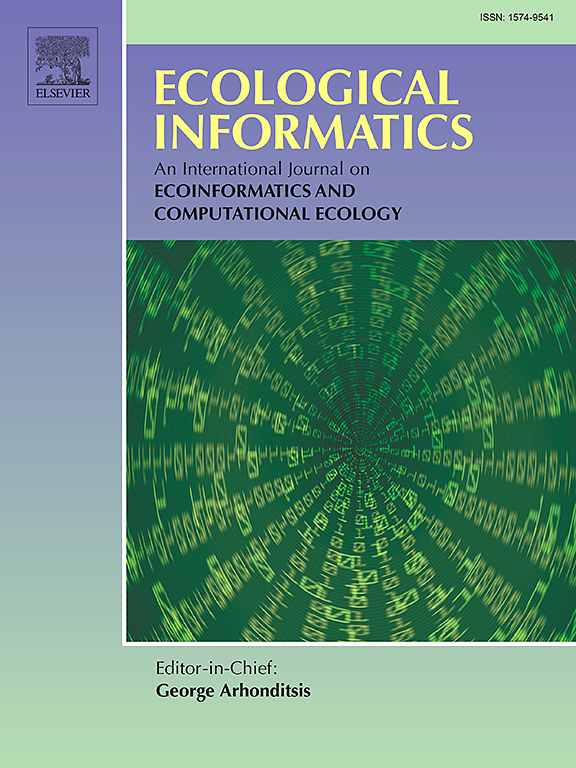滑坡易发性随降雨的时空变化及其未来预测 - 中国四川省的案例研究
IF 5.8
2区 环境科学与生态学
Q1 ECOLOGY
引用次数: 0
摘要
近几十年来,全球变暖极大地改变了降雨模式的时空分布。这种变化增加了降雨引发山体滑坡的风险,而山体滑坡是中国西南山区最常见的自然灾害。这些事件对该地区构成了不可预测的严重威胁,因此必须预测未来降雨趋势,并评估滑坡易发性将如何应对这些变化。了解这些动态变化对于制定有效策略以缓解和适应影响滑坡的降雨模式变化至关重要。本研究以中国四川省为重点,使用年累积降雨量(ACR)作为关键动态变量,绘制滑坡易发性地图(LSM)。目标是探索降雨量与滑坡易发性之间不断变化的关系,并利用未来降雨量预测来预测这些风险。为此,我们编制了一个历史滑坡地理空间数据库,包括五个时间类别:2000 年、2001-2005 年、2006-2010 年、2011-2015 年和 2016-2020 年。极端学习机(ELM)用于生成 2000 年至 2020 年的 LSM,而弹性框架则用于评估滑坡易感性对降雨量变化的敏感程度。为了预测未来的情况,采用了长短期记忆(LSTM)模型,利用 2000 年至 2020 年的月降雨量数据预测 2030 年的 ACR。然后利用预测的 ACR 估算未来的滑坡易发性。结果显示,滑坡高易发区明显增加:与 2000 年相比,2005 年为 5.6%,2010 年为 0.3%,2015 年为 0.2%,2020 年为 12.9%。弹性分析表明,从 2000 年到 2020 年,降雨量每变化 1%,滑坡易发区的平均变化幅度为 1.35%。展望 2030 年,预计 ACR 的上升将导致滑坡高易发区增加 2.44%。为确保这些研究结果的可靠性和稳健性,我们采用了多种验证技术。本文章由计算机程序翻译,如有差异,请以英文原文为准。
Spatiotemporal changes of landslide susceptibility in response to rainfall and its future prediction — A case study of Sichuan Province, China
In recent decades, global warming has significantly altered both the spatial and temporal distribution of rainfall patterns. This change has heightened the risk of rainfall-induced landslides, which are the most prevalent natural disasters in the mountainous regions of southwestern China. These events pose unpredictable and severe threats to the region, making it essential to forecast future rainfall trends and assess how landslide susceptibility will respond to these changes. Understanding these dynamics is crucial for developing effective strategies to mitigate and adapt to the changing rainfall patterns that influence landslides. This study focuses on Sichuan Province, China, and uses annual cumulative rainfall (ACR) as a key dynamic variable to create landslide susceptibility maps (LSMs). The goal is to explore the evolving relationship between rainfall and landslide susceptibility and use future rainfall projections to predict these risks. To achieve this, a historical landslide geospatial database was compiled across five temporal categories: 2000, 2001–2005, 2006–2010, 2011–2015, and 2016–2020. The extreme learning machine (ELM) was applied to generate LSMs for the years 2000 to2020, while an elasticity framework was used to assess how sensitive landslide susceptibility is to rainfall variations. To project future scenarios, a long short-term memory (LSTM) model was employed to project the ACR for 2030, using monthly rainfall data from 2000 to 2020. This projected ACR was then used to estimate future landslide susceptibility. Results showed a marked increase in high landslide susceptibility areas: 5.6 % by 2005, 0.3 % by 2010, 0.2 % by 2015, and 12.9 % by 2020, all relative to the year 2000. The elasticity analysis revealed that from 2000 to 2020, a 1 % change in rainfall would cause an average 1.35 % change in landslide susceptibility. Looking forward to 2030, the projected rise in ACR is expected to lead to a 2.44 % increase in areas of high landslide susceptibility. Multiple validation techniques were applied to ensure reliability and robustness of these findings.
求助全文
通过发布文献求助,成功后即可免费获取论文全文。
去求助
来源期刊

Ecological Informatics
环境科学-生态学
CiteScore
8.30
自引率
11.80%
发文量
346
审稿时长
46 days
期刊介绍:
The journal Ecological Informatics is devoted to the publication of high quality, peer-reviewed articles on all aspects of computational ecology, data science and biogeography. The scope of the journal takes into account the data-intensive nature of ecology, the growing capacity of information technology to access, harness and leverage complex data as well as the critical need for informing sustainable management in view of global environmental and climate change.
The nature of the journal is interdisciplinary at the crossover between ecology and informatics. It focuses on novel concepts and techniques for image- and genome-based monitoring and interpretation, sensor- and multimedia-based data acquisition, internet-based data archiving and sharing, data assimilation, modelling and prediction of ecological data.
 求助内容:
求助内容: 应助结果提醒方式:
应助结果提醒方式:


